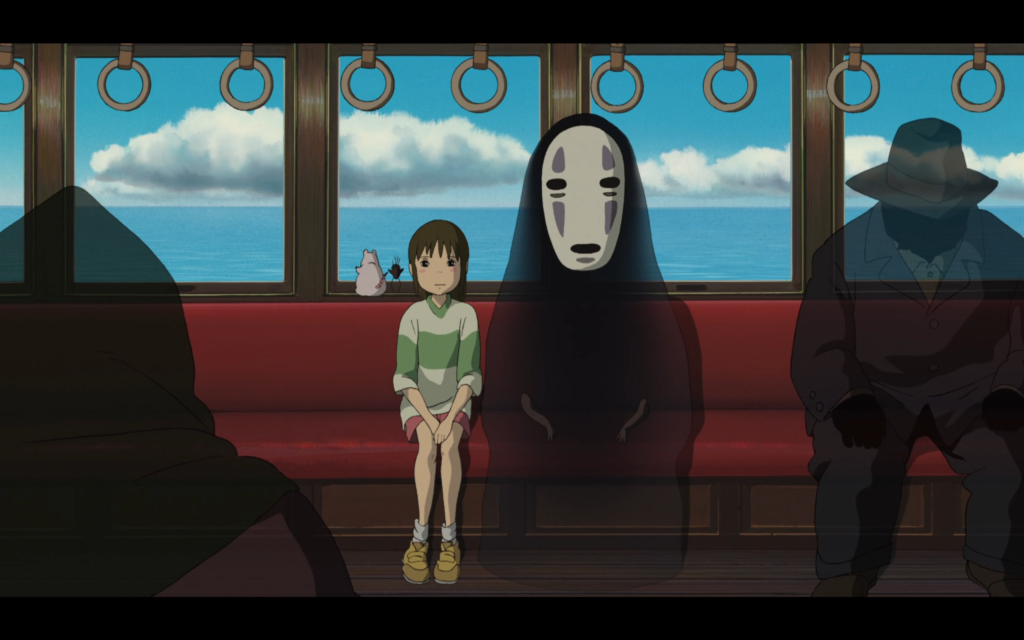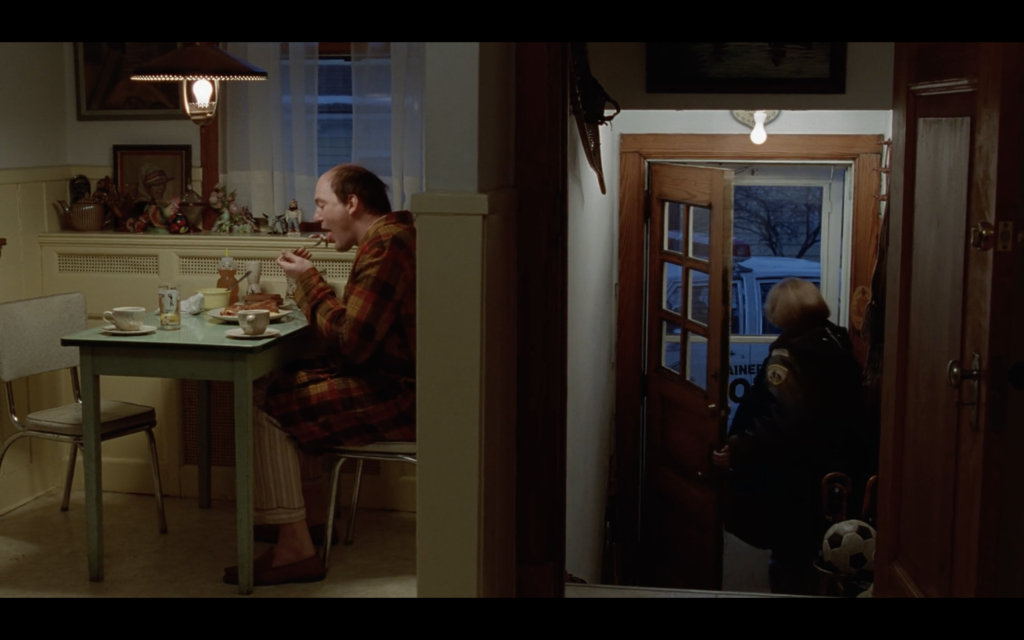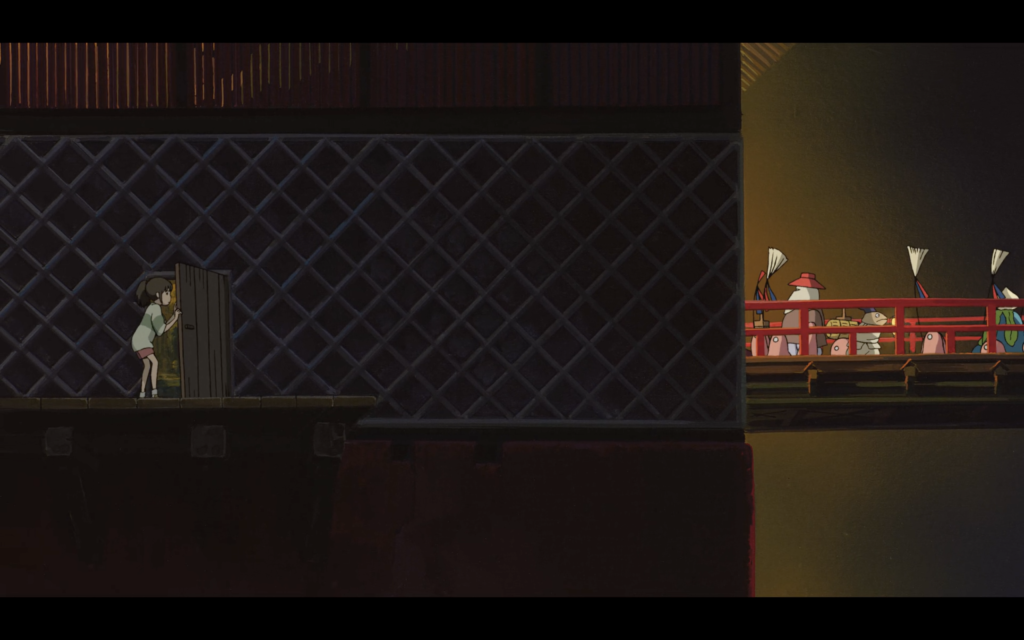The Godfather trilogy, Festen, Akira, The Matrix… these are just a few of my favourite movies. One an epic crime story, one a groundbreaking example of Dogme 95, another an exquisitely crafted apocalyptic anime set in a dystopian world, and one famous for it’s use of the most innovative cinematography for its time. Each of them gems worthy of inclusion in any hall of fame. There are a number of movies like that. And yet, for all their brilliance there is still for all of us at some point in our lives that one movie. The one you keep returning to, the one that stands out above all others. For me, that one movie is the Japanese Oscar winning animation ‘Spirited Away’ (Sen to Chihiro no Kamikakushi). Spoilers ahead, go see the movie first. And watch it in original Japanese audio, not the dubbed version.
It first appeared in theaters in 2001, and last year marked its 20th anniversary. ‘Spirited Away’ already garnered rave reviews when it came out, but film critics still seized the opportunity to reflect on how incredibly well this movie aged, and to again sing its praise. One of the most beautiful aspects of this movie, I think, is its ability to appeal to both children and adults. A very rare talent. And I’m not just talking about a few cleverly masked inside jokes that you’d only get if you’re a parent, for example. This movie is much more than that. For not only is Spirited Away a truly masterful mixture of magical entertainment for children, but it’s actually also a very well executed intellectual commentary on modern society in Japan. I highly recommend the thorough and insightful analysis by Ayumi Suzuki, which is so good that most of what I write is either directly or partially related to that piece.
Most of the movie is beautifully hand drawn, frame-by-frame, computers only assisting in rendering a couple of scenes. Hayao Miyazaki, the famous director of studio Ghibli, is known for preferring this classical style of animation and is not likely to switch to computers, unless he has to. When Zeniba makes a hair tie for Chihiro, she uses no magic to drive the spinning wheel, commenting that it’s better without magic. It is tempting to speculate that this is a reference to Miyazaki’s own preference for the traditional methods in animation, without the aid of computers. What also stands out about Miyazaki’s animation style is the frequent moments where nothing really happens. In previous interviews Miyazaki has stated that this is intentional. It is the Japanese concept of ma, which the director compared to the silence between each hand clap in an applause. Without that silence there would be just an overwhelming cacophony of noise. Thus, the occasional contemplative ’empty’ scenes in the movie function much like rest points in sheet music.
Another stylistically beautiful element that stands out to me, is the moment when Chihiro begins her perilous journey along the staircase on the side of the bathhouse. There is a wonderful scene in the beginning where both the bridge of the main entrance, with the spirit guests noisily walking on it, as well as Chihiro on the side of the bathhouse are visible in the same frame. This is a technique also used in other movies, for example when you have a wide shot showing one character in a room in one half of the screen, while on the left side we see another character doing something in a corridor (the breakfast scene in Fargo, for example). Having two separate things happening in the same shot makes the scene more exciting and dynamic. Another example of effective use of cinematic technique is the shot where Chihiro looks at a stone bollard with faces carved in it on both sides, right before she follows her parents into the tunnel. Here it looks like Miyazaki used a very subtle dolly zoom effect, or something like it, to make the scene appear creepy. Spirited Away is just full of great shots like that.
The attention to detail in the movie is just amazing. When Chihiro makes her way up the stone stairs towards the bridge, just before seeing Haku for the first time, she does so revealing right-sided dominance, as she always uses her right leg to step up. And as Chihiro makes her way down the staircase on the side of the bathhouse towards the boiler room, the attention to detail on the wall is equally stunning. Every little crack and weathering of the outside wall is revealed. So much love went into drawing all that! When she get’s to the boiler room, we see all the rust, every rivet, hissing steam escaping from pipes, wonky dials frantically rotating back and forth to suggest great pressure. This reminded me a bit of kintsugi, which is related to wabi-sabi. The philosophy that the ephemeral, fragile, imperfect nature of (repaired) objects should be valued, that the damage (with or without repair) of a thing actually adds to its beauty and value, is something that you can see throughout the movie. It also adds an organic feeling. For example, by the time Chihiro meets Kamaji you have the distinct impression that his boiler is alive, with a furnace for a mouth and two pressure dials for eyes. This fascination for machines and mechanical devices, and how they have a spirit of their own, is seen in other Miyazaki’s films, like Howl’s Moving Castle for example.
What I also love about the movie is that the characters are never black-and-white. No one is altogether good, or altogether evil. This is nicely illustrated with the evil antagonist in the movie, Yubaba—the witch who runs the bathhouse—and her twin sister Zeniba (who lives a quiet life in the forest). They might as well have been named ‘Ying’ and ‘Yang’ instead. I won’t go into detail about how Yubaba might represent the rise of Western industrialization and capitalism in Japan, around the fin de siècle of the 19th century. This has already been thoroughly discussed by Ayumi Suzuki. And the same goes for No-Face, the masked black faceless spirit resembling greed who ends up devouring a number of Yubaba’s greedy staff.
Another scene that stands out is the train journey, when Chihiro travels to Zeniba’s house. It is in my opinion one of the best scenes I’ve ever seen in a movie. It begins with the characters on the train; the passengers and the conductor/machinist are all black, semi-translucent, faceless. I differ from Suzuki’s interpretation in that I think perhaps Miyazaki wanted to simply suggests the anonymity of the public. After all, who remembers everyone you see when walking on the street, or in a bus? Are they not all just as faceless, don’t we sometimes just look straight through the other people? The most beautiful thing about the train journey is that the tracks and surroundings are flooded with water, creating a smooth reflective surface surrounding the train that functions like a great big mirror reflecting the sky. I believe Miyazaki is possibly commenting on the illusion of free will in our ‘journey’ through life, especially in a collectivistic culture like the Japanese that values conformity. We have the idea that the train could go anywhere, but unseen by us are the tracks and switches underneath the surface, constraining its course. In Japan, the pressure to perform well scholastically is immense. One might wonder how free someone born in any culture is, to be fully in control of their own future, but perhaps more so in Japan. Indeed, perhaps in Japan this idea of freedom only exists de jure, not de facto; constrained as its people is by a plethora of societal rules, mores, and high expectations. Similarly, the train has no choice but to follow the tracks, even though the water on top suggests boundless freedom. Thus it makes you wonder; Did Miyazaki merely intend to make a stunning visual, or did he find a very clever representation of an important philosophical concept, of fate and determinism? Regardless of the ‘correct’ answer (if there is such a thing in art), this is not just pretty animation anymore, it is visual poetry.
More comments on Japanese society and ethics can be found throughout the movie. When Haku tells Chihiro that she must find work, or else Yubaba will turn her into an animal, for example. Work, or be nothing. Or take the soot sprites in Kamaji’s boiler room as another example. When Chihiro tries to help one of them, Kamaji warns her that if the susuwatari stop working, the spell will be broken and they will cease to exist. As if Miyazaki is commenting on Japanese modern culture; “Without your job you’re nothing.” In Japan, does personal identity come from within or do most derive it from the context of their work? This idea is also reflected in the fact that Yubaba controls her employees by taking their names away from them—Chihiro becomes Sen, for example—linking their identities to the witch’s bathhouse. That is also why Haku quits his apprenticeship only when he finally recovers his own name.
I also wouldn’t be the first to see the similarities between the many contrasting aesthetic elements (Western modernisation versus traditional Japanese style) in ‘Spirited Away’ and Jun’ichirō Tanizaki’s classic essay ‘In Praise of Shadows’. Notice for example how incredibly bright the bathhouse is, just the kind of garish flooding by electrified lighting that Tanizaki bemoaned. Even the ferry carrying spirits to the bathhouse is almost as bright as the sun itself! This is contrasted with areas outside of the bathhouse, or at least the main areas visible to the guests, where there are plenty of beautiful shadows. Notice also that Yubaba is dressed in Western clothes, and the top floor where she lives is decorated in Western classical style. A stark contrast with the traditional Japanese style of her employees and their living quarters. This was also noticed by Ayumi Suzuki, whose excellent analysis I again refer to here.
Then there’s the brazen audacity of Chihiro’s parents, who without permission just begin devouring food in an empty dining place, with the father remarking that it’s okay since he has bank cards and cash on him. Why not be rude if you can afford it? Money can almost literally turn people into pigs. Together with other characters like No-Face, and Kamaji—the six-armed spider-like slave to the boilers, symbolising great ability and industriousness—Miyazaki seems to be commenting on the greed, the materialism and hedonistic consumerism in Japan that was imported from the West over a century ago and thrives to this day.
Another magical scene is for example when the hopping lantern guides Chihiro from the train stop to Zeniba’s house in Swamp Bottom. The latern is said to be a reference to Pixar’s famous ‘Luxo Jr.‘ lamp, that comically squishes the ‘i’ in the well-known short animation that precedes the beginning of every Pixar movie. This hommage is done so incredibly well, that it simply blends seamlessly into the movie and convinces fully, even knowing it’s a nod to Pixar/John Lasseter. Another reference is the ‘Stink Spirit’, which Miyazaki has taken from his own experience cleaning up a polluted river. In fact, one strongly suspects that all the gods that come to the bath house do so to be cleansed of human pollution. Again a reference to unbridled consumption and the throw-away society.
Now, I don’t want to give the impression that the whole movie is mostly a comment on the bad influences of the West on Japanese society. These are just little comments that have been masterfully blended in a great story that stands by itself. Indeed, the adventure of Chihiro remains the star of the show. A true hero whose perfect child-like innocence, perseverance against many hardships—and her love for Haku and her parents—conquers all. She seems to embody all that is good and pure, has great strength and a keen intuition. There should be more examples like her in movies, and Miyazaki is famous for his many films featuring strong female protagonists: ‘Nausicäa of the Valley of the Wind’, ‘Kiki’s Delivery Service’, and others. Indeed, Miyazaki’s movies often have strong feminist themes and can have a very meaningful impact on a person’s life.
As far as Spirited Away is concerned, I will leave with one last comment on the incredible beauty of this film. In the end of the movie, when Chihiro exits the tunnel with her parents, she looks back one last time. In that moment the hair tie that Zeniba made for her sparkles magically, subtly informing the viewer that the whole adventure really happened and reassuring us that Chihiro is forever under its protection. That is where the movie ends and the amazing song ‘Always With Me‘ (Itsumo Nando Demo), performed by Youmi Kimura, begins. The idea that there is value and beauty in damaged things is even reflected in the music, for example:
When a mirror has been shattered, scattered pieces on the ground
Glimpses of new life, reflected all around
This is the most perfect happy ending I’ve ever seen in a movie. Everything in this animation just lives and breathes pure magic, pure love. I am not ashamed to admit the ending brought tears to my eyes the first time I watched ‘Spirited Away’, and the movie continues to move me to this day. For me it is simply the greatest movie ever made.









